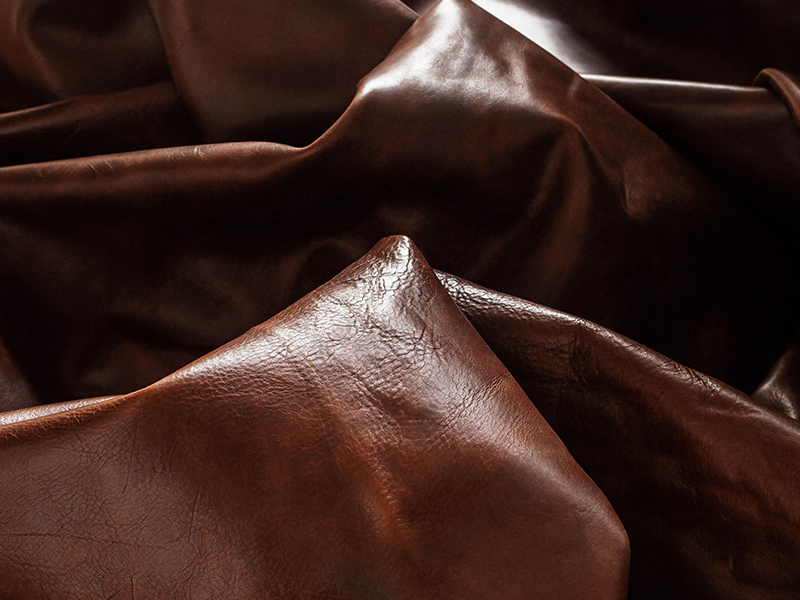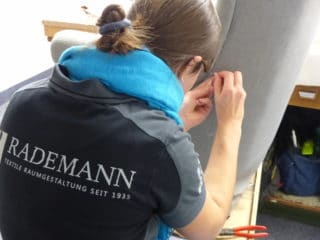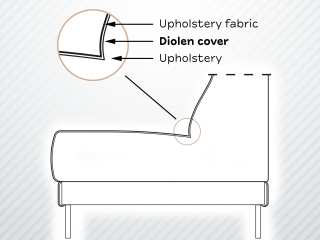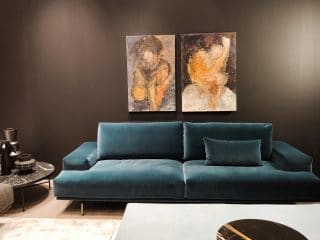In the furniture sector, mainly cattle hides, mostly bull hides up to 7sqm in size, are used. For a sofa with as few seams as possible, it is necessary to cut the parts exactly. That is why the production of leather sofas differs significantly from the production of other leather products such as bags. When a sofa manufacturer designs a new sofa, test cuts are first made from fabric. Only after the exact fit of the “replacement skin” are the skins cut.
Placement of blanks and craftsmanship perfection
An exact working method is essential when cutting the hides. Choosing the right piece of leather in each case requires special attention and years of experience. For example, it is important to remember that the seat and back of a sofa are subject to greater stress than the back. Additionally, since cowhides have different stretching capabilities, perfect work must be done here to avoid unwanted bulges and wrinkles. For a good end result, try to cover the sofa from one skin if possible.
Sorting and harmony of the individual parts
Natural skins must be carefully sorted so that the transitions at the seams are as harmonious as possible. This applies to both the color and the surface structure. Even though many work steps are now performed by machines – the human eye is still indispensable here. Sifting through the skins and finding the parts that fit together requires a skillful approach to the natural, natural irregularities of the skin.
To bring the authenticity of the leather and the idiosyncrasies of nature to the fore, particularly conspicuous areas of leather are sometimes deliberately placed visibly. This can be, for example, scars in the leather, which in this case should represent a quality feature.
Optimal utilization of the material
In addition to optical aspects, the best possible utilization of the material also plays a major role. High waste makes production more expensive and thus also the price in the furniture business. Nowadays, however, computer-controlled cutting machines are used to reduce waste to a minimum. This approach makes the sofa cheaper to market.








